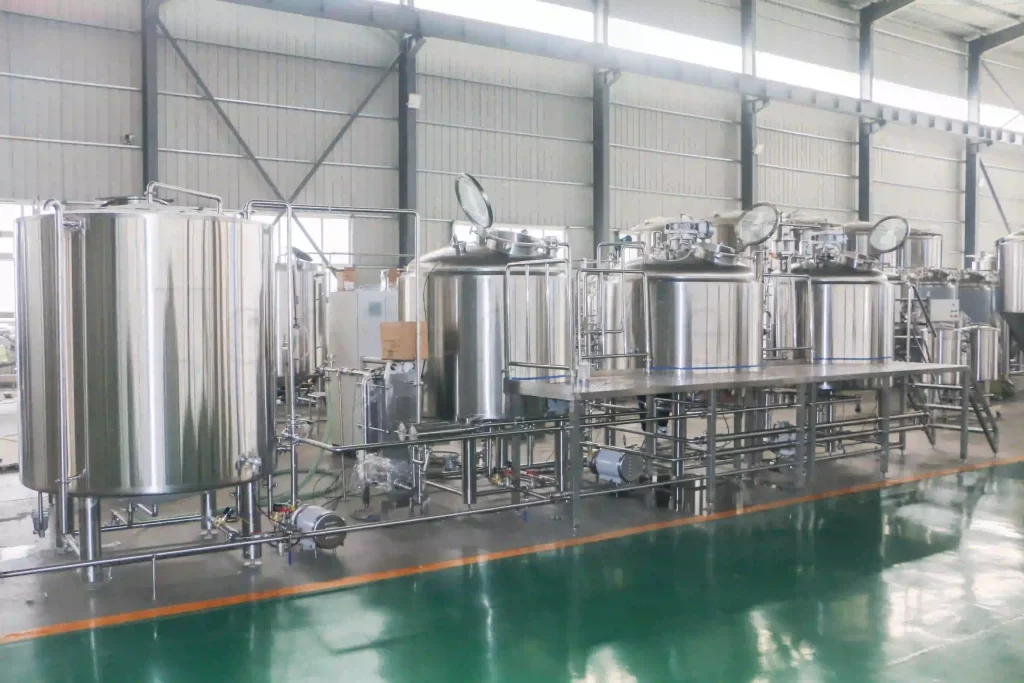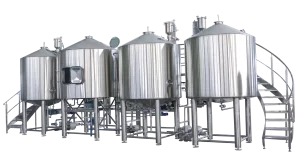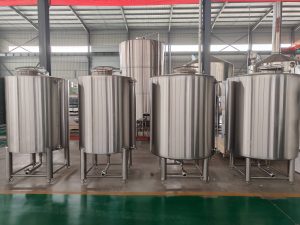How to Master Brewery Planning: Calculate the Ideal Brewery Size for Your Craft Beer Business

Starting a craft beer business is an exciting venture, but one of the most critical decisions you’ll make is determining the ideal brewery size. Getting this right ensures efficient operations, maximizes profitability, and sets your business up for long-term success. In this guide, we’ll walk you through the steps to calculate the perfect brewery size for your craft beer business, covering everything from equipment space to brewery planning.
Why Brewery Size Matters
Choosing the wrong brewery size can lead to a host of issues. Too small, and you’ll struggle to meet demand, leading to lost sales and frustrated customers. Too large, and you’ll face unnecessary overhead costs, wasted space, and underutilized equipment. For craft beer businesses, where margins can be tight, these mistakes can be costly.
Many new brewery owners underestimate the importance of brewery planning and fail to account for factors like equipment space, future growth, and operational efficiency. This oversight can hinder your ability to scale and compete in the growing craft beer market.
The Consequences of Poor Brewery Planning
Without proper planning, you might find yourself:
- Overwhelmed by demand: A brewery that’s too small can’t keep up with orders, damaging your reputation.
- Wasting resources: Excess space and unused equipment drain your budget.
- Stifling growth: A poorly sized brewery limits your ability to expand your product line or enter new markets.
- Facing logistical nightmares: Inefficient layouts lead to wasted time and increased labor costs.
These challenges can derail your craft beer business before it even gets off the ground. That’s why calculating the ideal brewery size is essential.
How to Calculate the Ideal Brewery Size
To determine the perfect brewery size for your craft beer business, follow these steps:
1. Estimate Your Production Volume
Start by projecting how much beer you plan to produce annually. Consider factors like:
- Target market size
- Sales channels (taproom, distribution, etc.)
- Seasonal demand fluctuations
For example, if you plan to produce 1,000 barrels per year, you’ll need a brewery size that accommodates this volume without overextending your resources.
2. Account for Equipment Space
Your brewery equipment will take up a significant portion of your space. Key items to consider include:
- Brewing system (e.g., 10-barrel, 20-barrel)
- Fermentation tanks
- Bright beer tanks
- Storage for raw materials (grains, hops, etc.)
- Packaging equipment (bottling, canning, or kegging lines)
Create a detailed layout of your equipment to ensure efficient use of space. Don’t forget to leave room for maintenance and future upgrades.
3. Plan for Future Growth
While it’s important to start with a manageable size, your brewery should have room to grow. Consider:
- Adding more fermentation tanks as demand increases
- Expanding your taproom or storage areas
- Incorporating new product lines (e.g., seltzers or non-alcoholic beers)
Aim for a brewery size that allows for 20-30% growth within the first few years.
4. Optimize Your Layout for Efficiency
Efficient brewery planning minimizes wasted space and streamlines operations. Key considerations include:
- Workflow: Ensure a logical flow from brewing to packaging.
- Accessibility: Leave enough space for staff to move safely and comfortably.
- Utilities: Position equipment near water, electricity, and drainage points.
5. Consult with Experts
If you’re unsure about your calculations, consult with brewery design experts or experienced brewers. They can provide valuable insights and help you avoid costly mistakes.
Conclusion: Set Your Craft Beer Business Up for Success
Calculating the ideal brewery size is a crucial step in brewery planning. By estimating your production volume, accounting for equipment space, planning for growth, and optimizing your layout, you can create a brewery that meets your needs and supports your long-term goals.
Remember, the right brewery size not only enhances operational efficiency but also positions your craft beer business for success in a competitive market. Start planning today, and raise a glass to a thriving future!
https://www.tcbrewbeer.com/en/50hl-industry-brewery-equipment/
Related recommendations
The Impact of Craft Beer Culture on Brewing Equipment Design
309Learn how craft beer culture shapes brewing equipment design with customization, sustainability, and automation trends.
View detailsWhat is a Bright Tank and How It Improves Beer Quality?
357Learn how a bright tank improves beer clarity, carbonation, and stability, ensuring high-quality beer ready for packaging.
View detailsInstallation and Layout of Conical Fermentation Tanks
189Optimize brewing with proper conical fermentation tanks installation and layout. Enhance efficiency, maintain quality, and streamline production seamlessly.
View details
 Shandong Tonsenbrew Co., Ltd.
Shandong Tonsenbrew Co., Ltd.




HelloPlease log in